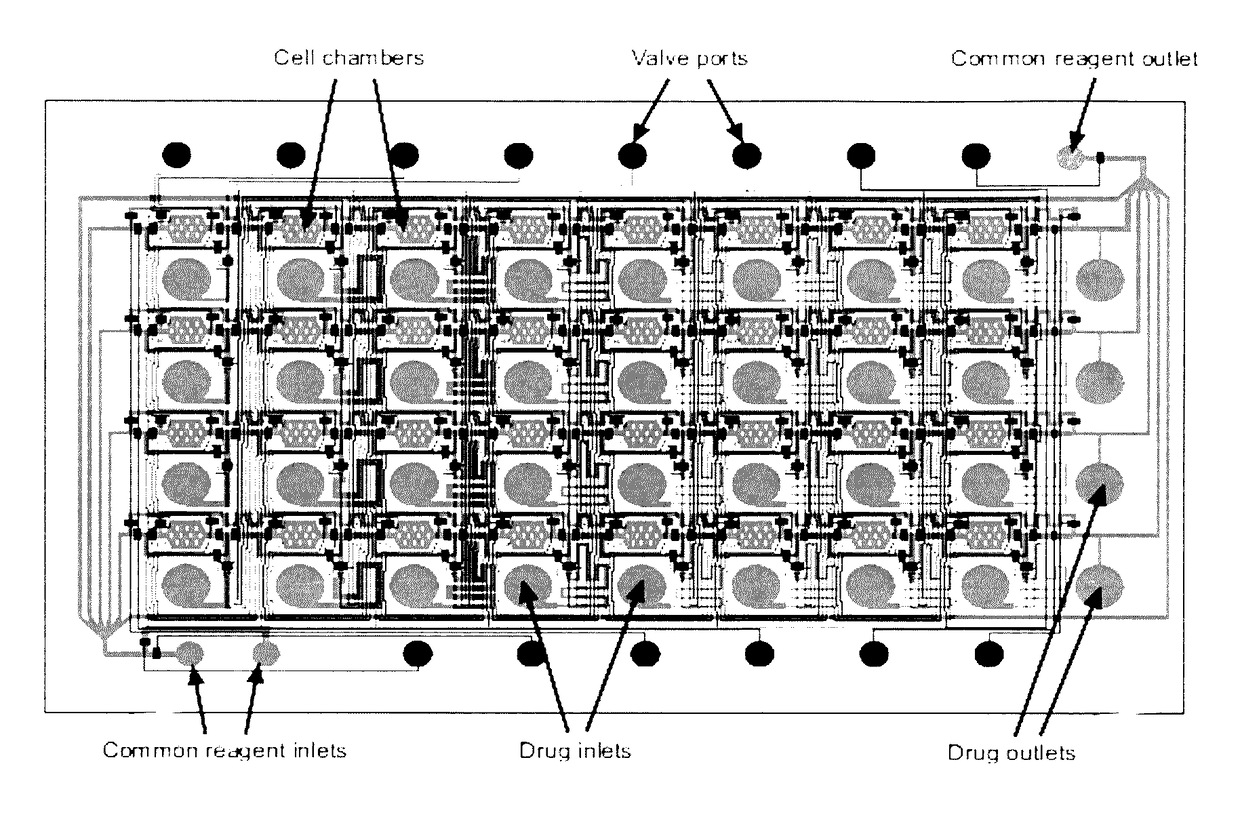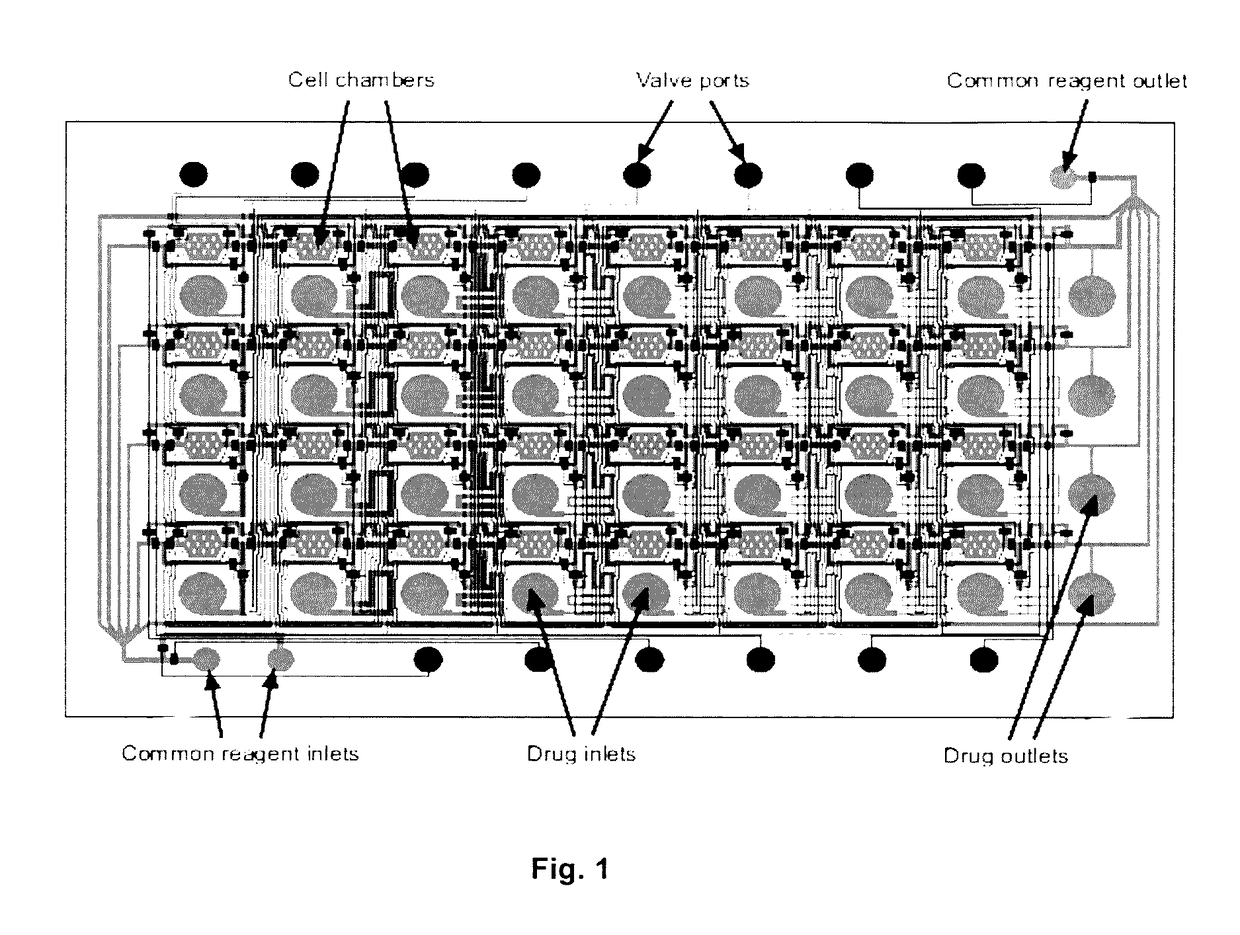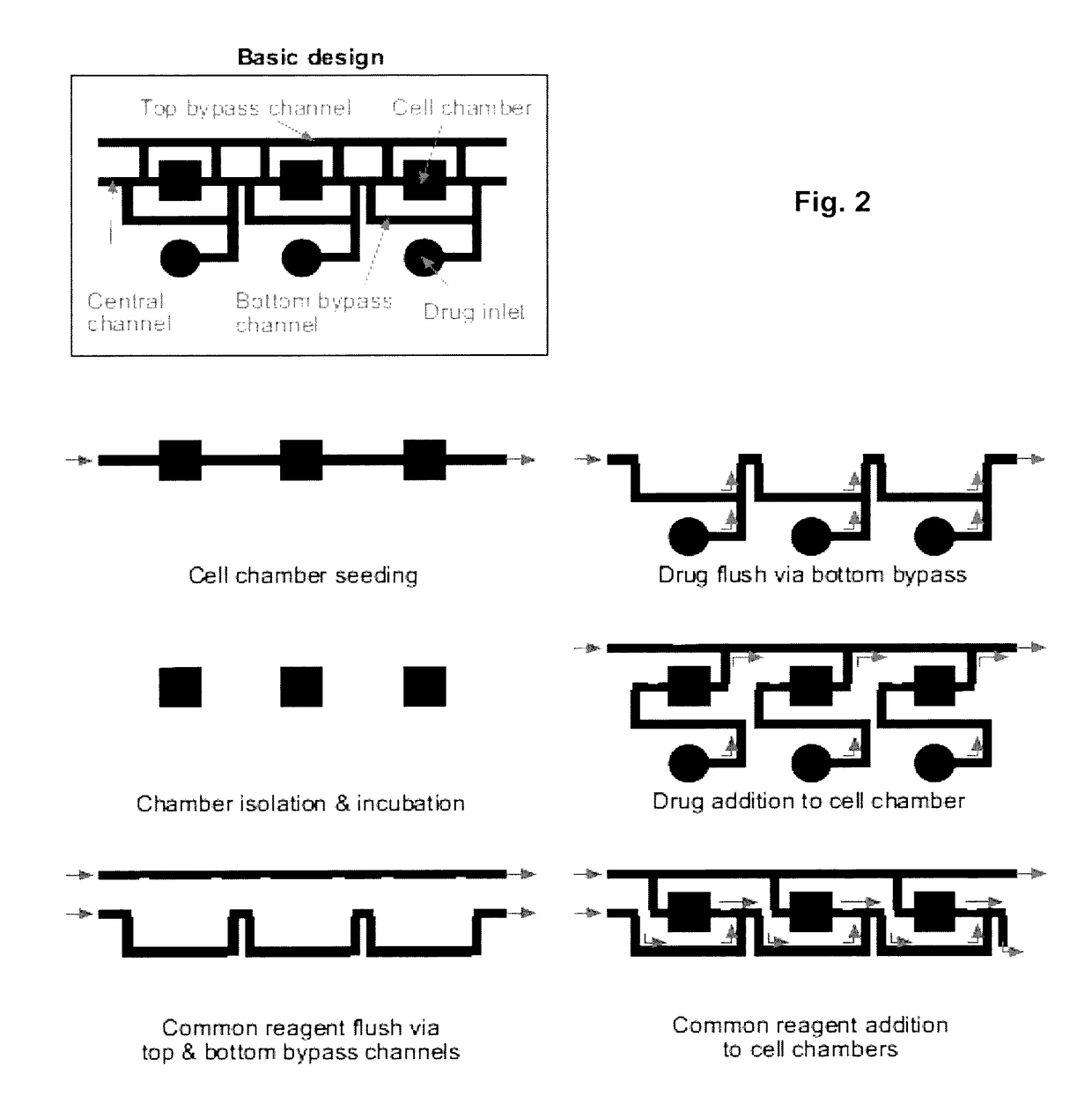Microfluidic grid-based design for high throughput assays
a microfluidic grid and high throughput technology, applied in the field of microfluidic grid-based design for high throughput assays, can solve the problems of long delay in the response time of integrated valves, interference with controlled comparisons between chambers, and significant flow non-uniformity in the original design, so as to improve the operation and reliability of the technology.
- Summary
- Abstract
- Description
- Claims
- Application Information
AI Technical Summary
Benefits of technology
Problems solved by technology
Method used
Image
Examples
Embodiment Construction
[0051]The result of this invention is a range of microfluidic chip design that would be appropriate for use in high-throughput drug screening applications, by designing it to be compatible with existing robotic liquid handlers and imaging equipment. To achieve this goal, we designed a microfluidic chip design in which the top-loading drug inlets and cell chambers are arranged in a grid spacing according to the ANSI / SBS standards for the locations of microtiter wells. In such a design, drugs can be transferred into the chip using standard fluid dispensers, and cell responses can be imaged with standard robotic microscopes. We performed three tasks to demonstrate the functionality of the design:[0052]Section A: Scale up the device design to accommodate 96- and 384-drugs in parallel[0053]Section B: Determine operating conditions and procedures that support cell experimentation[0054]Section C: Perform a pilot experiment to screen drugs on cells in the device
[0055]In the remainder of thi...
PUM
| Property | Measurement | Unit |
|---|---|---|
| size | aaaaa | aaaaa |
| size | aaaaa | aaaaa |
| height | aaaaa | aaaaa |
Abstract
Description
Claims
Application Information
 Login to View More
Login to View More - R&D
- Intellectual Property
- Life Sciences
- Materials
- Tech Scout
- Unparalleled Data Quality
- Higher Quality Content
- 60% Fewer Hallucinations
Browse by: Latest US Patents, China's latest patents, Technical Efficacy Thesaurus, Application Domain, Technology Topic, Popular Technical Reports.
© 2025 PatSnap. All rights reserved.Legal|Privacy policy|Modern Slavery Act Transparency Statement|Sitemap|About US| Contact US: help@patsnap.com



